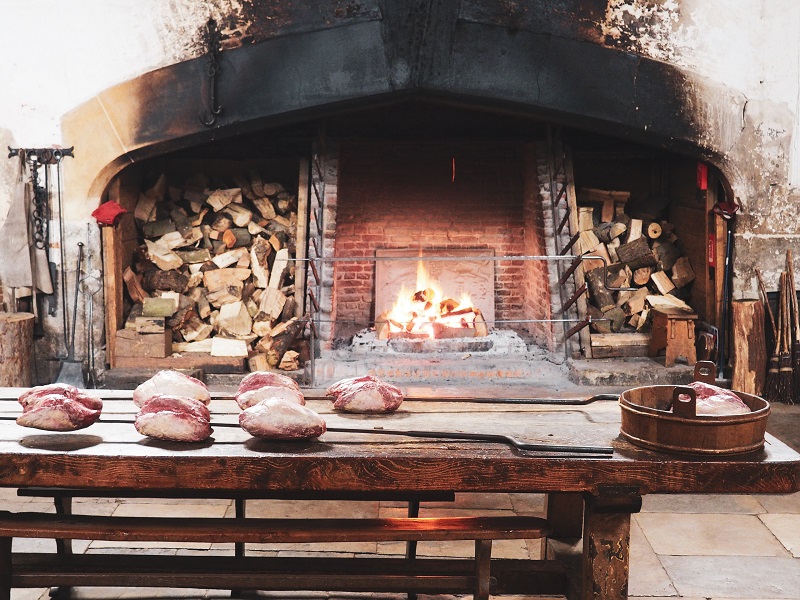
Fancy your own fish larder? How about a dedicated Chocolate Room? The kitchens at Hampton Court Palace covered 3,000 square feet, burned a million logs a year and were run by 200 staff – this is the ‘kitchen’ taken to the max. But look closely and there are some surprisingly lovely, even contemporary, design touches…
Our Kitchens Unbound series goes from one kitchen extreme (the tiny but brilliantly engineered Frankfurt kitchen) to the other. The scale of Henry VIII’s kitchens at Hampton Court Palace was astonishing: a labyrinth of 55 rooms, covering 3,000 square feet, where a total of 200 staff produced an average of 600-800 meals twice a day.
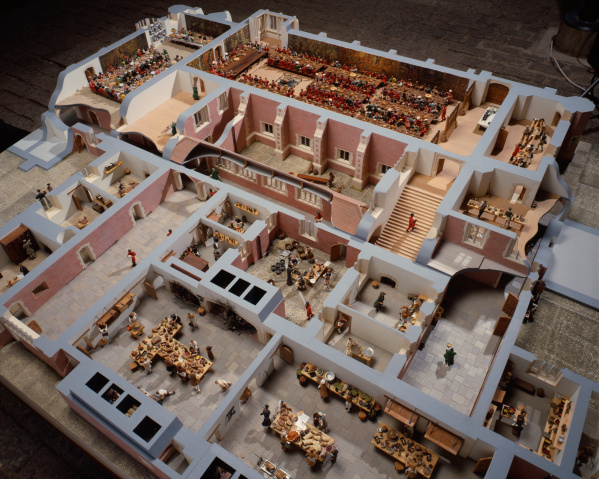
The kitchen was already big when Henry acquired the palace from Cardinal Wolsey in 1529. The King – who famously enjoyed his feasting and wanted to provide a bouche of court (free food for the whole court) – quadrupled it. Each kitchen department was run by a Sergeant, who led a team of yeoman and grooms, while three Master Cooks (one for the King, one for the Queen and one for the Court) presided over the Great Kitchen and supervised a team of undercooks, scullions and kitchen maids.

Each worker’s duty was highly specialised, from food prep to feeding the fires, and the layout of the kitchens reflect this. The Great Kitchen was originally dominated by six massive fireplaces, each serving a specific purpose; spit-roasting meat, boiling, simmering or baking. The fires were fed by 1.3 million logs a year.
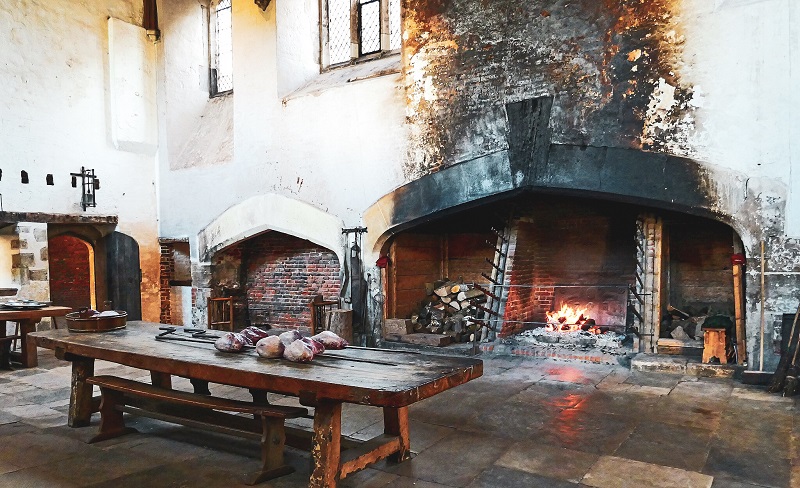
Cookware was on a similarly ridiculous scale: rows of large cauldrons bubbled away throughout the day, and large pots, pans, and baking trays were in constant use. Food preparation took place on wooden tables and butcher’s blocks, with staff pretty well permanently engaged in chopping, slicing, and dicing. According to visitors at the time, including a Spanish ambassador, it was a hellish place—extremely hot and dirty, and run on copious amounts of beer…
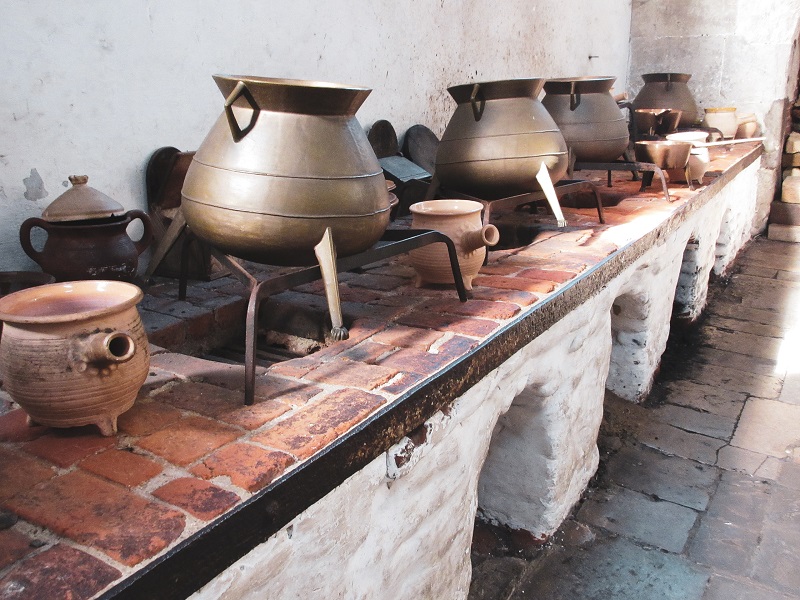
Other rooms included a dairy, a pastry room (the Tudors loved their pies), a spicery, a confectionery, a boiling house, a pewter storage room, and three larders: a flesh larder for meat, a wet larder for fish, and a dry larder for pulses and nuts.
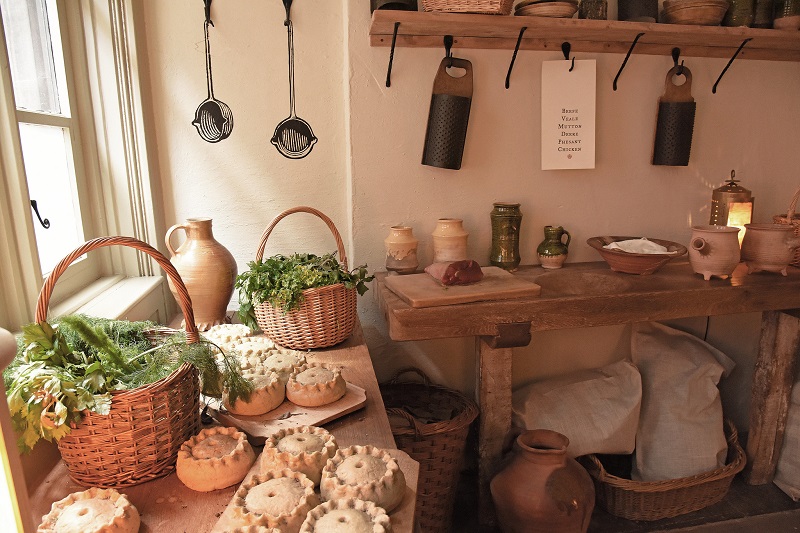
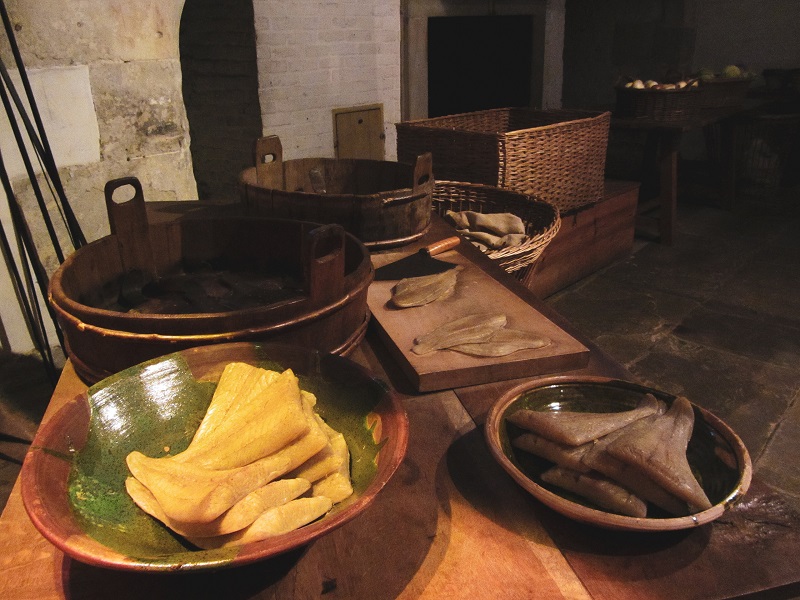
There were three cellars: the privy cellar for the monarch’s wine and ale, and separate wine and ale cellars for the courtiers.
Once ready, finished dishes were taken to the Great Kitchen’s serving hatches and collected by liveried footmen, who carried them to the palace’s Great Hall, where the feasting took place. This was not a time for vegetarians: virtually every meal centred around roasted meat.
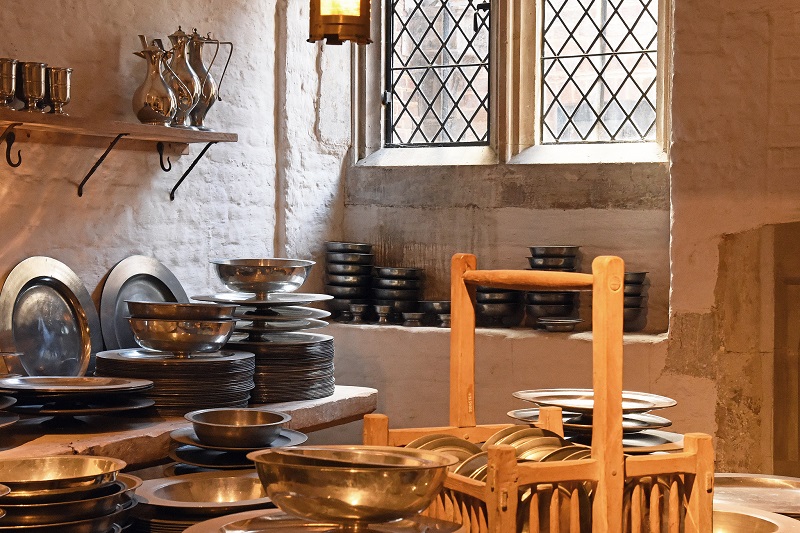
The Chocolate Kitchens
But as well as all the meat-roasting, cauldron-bubbling, ale-quaffing excesses of Henry VIII’s court, Hampton Court Palace has a more delicate, refined side.
In the 1690s, Sir Christopher Wren was commissioned to design and build the Chocolate Kitchens, where skilled chocolate makers prepared what had become the Stuart royalty’s favourite breakfast beverage. The adjoining Chocolate Room housed a collection of gilded pots and prized porcelain in which hot chocolate was served.
Over time, the Chocolate Kitchens fell into disuse and ended up as storerooms, and their precise location in the Palace labyrinth was only rediscovered in 2013. Now restored, the Chocolate Room is a charming space, with original fittings including a brick stove fireplace, Georgian shelves and a fold-down table used by the King’s chocolatier, Thomas Tosier. The Chocolate Kitchens are the only surviving kitchens of this kind in the country.

The palace kitchens remained in royal use for over 200 years until 1737, after George II became the last monarch to live at Hampton Court Palace. A century later, Queen Victoria opened the palace to the public. Now in the care of Historic Royal Palaces, it receives almost one million visitors a year.
And if you fancy it, you can even have a go at some Tudor-style cooking: Hampton Court hosts regular Tudor Cookery and Roasting sessions throughout the year. Bring on the roasted swan!
Hampton Court Palace kitchen inspiration
Although few of us have 55 rooms to spare, there is still plenty at Hampton Court to inspire the contemporary kitchen designer. We particularly love…
Wooden worktops
An expertly-crafted, solid wood worktop gives a kitchen a beautiful, natural finish. Our own Hampton Court kitchen features an End Grain worktop: the surface that butchers traditionally prefer for chopping meat.
Specialist larders
You may not have enough space for a dozen of them, but a bespoke larder is a great addition to a kitchen. By going bespoke you can build a kitchen tailored to your own culinary specialisms: what you cook and how you cook it.
Elegant simplicity
True, ‘elegant simplicity’ is not something you associate with Henry VIII, but the much later Chocolate Room is a lovely, homely space. With its minimalist colours and handcrafted timber shelves in white it has an almost country cottage feel… Not a million miles away from our Cley kitchen.
See also:
Lanhydrock House - the quintessential country house kitchen
Ernest Shackleton's Cape Royds kitchen - built for an extreme life
If you want to know more about what the Tudors ate and how their favourite dishes were made, check out The Tudor Cookbook: From Gilded Peacock to Calves Feet Pie by Terry Breverton.





















